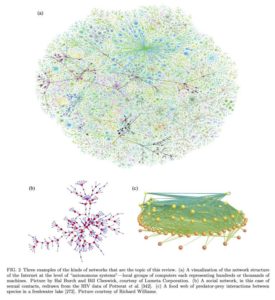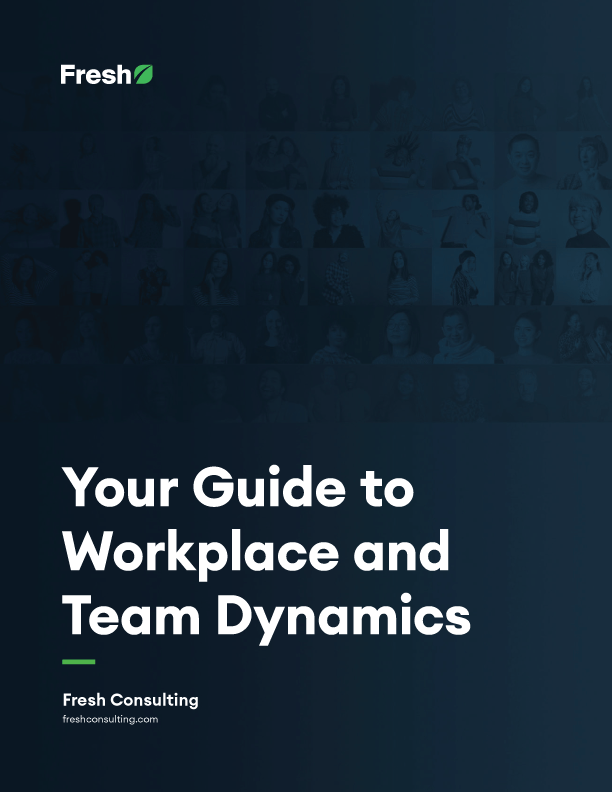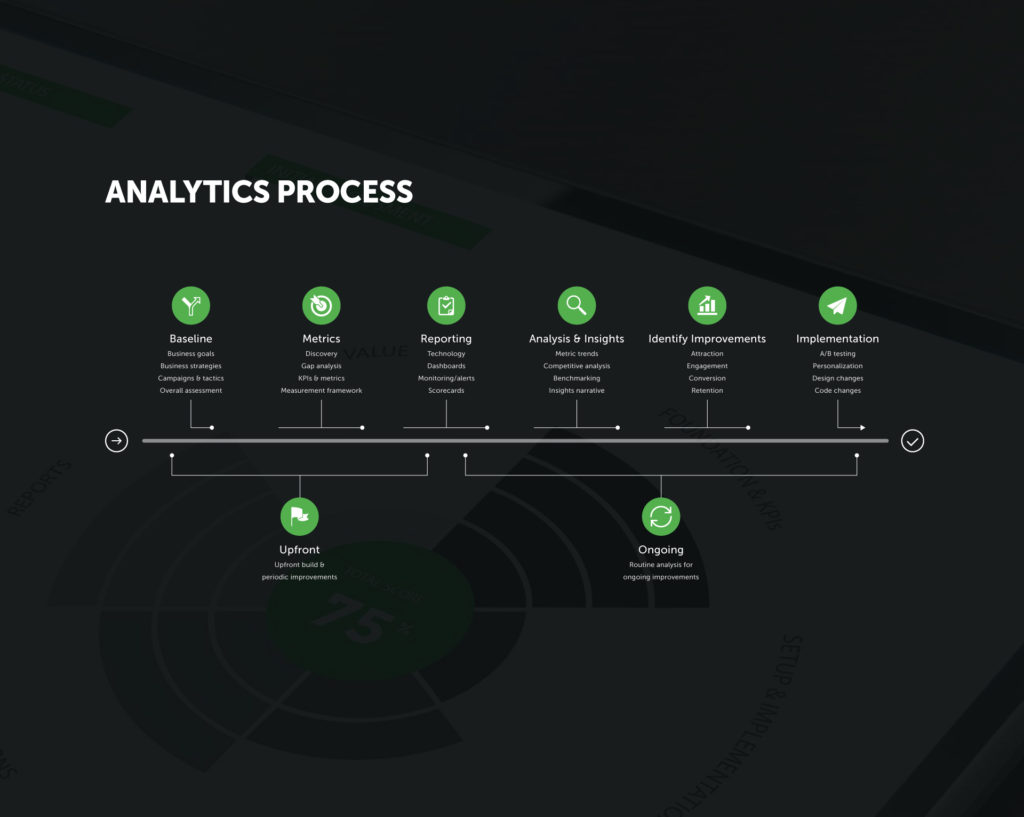Article
What is Strategy, Now? Networked Strategy.

Networked Strategy, an approach based in participatory value creation, allows us to move beyond the “single source” approach to strategy. Fresh’s Strategy & Innovation practice embraces this paradigm through the Fresh Algorithm for Strategic Transformation to help its partners achieve the greatest impact possible in our innovation work together.
A Very Static History
For years people have been applying the broadest definition of strategy—planning—to their endeavors. To do even simple things effectively requires a plan.
Many plans were ineffective, and forgotten. But if an endeavor was successful, and the plan worked, it invited inquiry. If human ingenuity revealed itself, the plan shone brighter. More people remembered additional details. It was cited in the future.
Some results may have been chance. Or factors outside contemporary understanding. Occasionally, though, steps in the plan fit into dramatic narratives of success.
That’s a successful strategy, at its simplest: Novel cleverness leading to an unexpected, better outcome. Michael Porter, in his foundational essay “What is Strategy?” establishes that strategy is not “operational excellence.” Merely having a plan to win is not a strategy. Porter’s essay has provoked numerous reactions, rebuttals, and reappraisals, including a recent omnibus survey from senior editor Andrea Ovans in Harvard Business Review, “What is Strategy, Again?”
Approaches have varied. Works like Blue Ocean Strategy by Mauborgne and Kim, and designing markets and innovation by Christensen focus on finding new ground to till. Others aim at strengthening existing advantages. According to Ovans, though, “the third camp — reacting opportunistically to emerging possibilities — represents the field’s most recent thinking.”
A Very Elastic Present
The diffusion of information and technology has rapidly changed. The resulting acceleration of information creation and uncertainty continues to unfold. This adds a patina of wear on past models faster than before.
We live in an era of abundance, especially when it comes to information. Traditional models based on supply and demand don’t hold when supply effectively reaches infinity, and demand can be coordinated at speeds and depths never before experienced.
As pre-digital revolution tools and techniques have become less relevant, our new paradigm demands new metaphors and mental models for strategic excellence.
These differing contexts mean expanding our idea of strategy—the application of a competitive advantage toward a novel outcome—toward a more varied group of aims. How we deliver strategy, meanwhile, must expand beyond the 20th Century model of a map, plan, or document.
Strategy, Porter says, consists of creating fit among a company’s many integrated activities, while making trade-offs. “If there is no fit among activities, there is no distinctive strategy and little sustainability. Management reverts to the simpler task of overseeing independent functions, and operational effectiveness determines an organization’s relative performance.”
Within a large, interlocking organization of many moving pieces and departments in a matrix, this fit requires elasticity, and subtle shifts while retaining core truths. It has to make sense to all the differing stakeholder audiences. And it has to transcend improvement.
To put it in more concrete business-related terms, “the operational agenda involves continual improvement everywhere there are no trade-offs. In contrast, the strategic agenda is the right place for defining a unique position, making clear trade-offs, and tightening fit,” Porter says.” It involves the continual search for ways to reinforce and extend the company’s position. The strategic agenda demands discipline and continuity; its enemies are distraction and compromise.”
Strategy, in the 20th Century sense, unlocks big ideas through vision and narrative, helping organizations understand and transcend to direct resources appropriately. But this is no longer enough.
Strategy, following Porter, is a matter of working out your company’s best position relative to all the forces in your competitive environment. Now that the environment is changing so rapidly, it requires a more efficient way to create relationships in all environments: a networked strategy. Connections between data, people, systems, companies, organizations, and governments are the foundation of a more robust, winning entity. Organizational agility, a companion attribute to a networked strategy, according to McKinsey, has a high correlation (70%) with reaching “the top quartile of organizational health, the best indicator of long-term performance.”
Our newly-networked world and distributed ways of working mean how knowledge is shared inside this massive, interrelated set of players—and subsequently how strategy directs action—has changed. How that information and direction is disseminated is as important as the what.
Now that we’ve come to grips with how networks fuel our interactions, it seems hopelessly atavistic to expect meaningful outcomes from a hierarchical or command and control approach to strategy.
A Very Connected Future
Our elastic and uncertain present will give way in part to a more connected future, as the technological frameworks initiated in the first two decades of the new century become fully distributed. A glut of infrastructure and bandwidth will bring enterprises closer than ever before.

For enterprises, this means adapting. Strategy Paradox says we can no longer focus on doing solely one good thing. Uncertainty and speed can change our “one good thing” so much. We should have more than one thing in our services and product offering, so that external evolution doesn’t kill us.
This necessitates a nonlinear, networked approach to strategy, similar to what London’s Stripe Partners describes in “Strategy as an Unfolding Network of Decisions.” (Emphasis added.)
Porter characterizes strategy as a linear, analytical process that produces a static set of written materials outlining the agreed direction and set of decisions. [Classical] Strategy is, in theory, independent of the people, context and environment in which it is conceived. In this view, the strategy document could be shared with an equally competent management team and the same outcomes would be achieved.
However, the range of outcomes are often contingent and not the result of a linear process. They are the product of an ongoing and complex interaction of people, experiences, artifacts and decisions that plays out over time. In this sense strategy can be seen an unfolding network of associations, not a static, disembodied document.
If we stop thinking about ‘strategy as a document’ and start thinking about ‘strategy as a network’, then this reframes how we think about effective strategy. At the heart of this sits the question of knowledge management.
In the ‘strategy as document’ paradigm, it is assumed that formalised knowledge is infinitely transferable. In the ‘strategy as network’ paradigm, it is assumed that knowledge is contingent on participation in the network.
By recognizing strategy as a network, the approach helps to focus the ‘web of relations’ between actors. In this light, the distinction between a good strategy and bad strategy is not just its formal content. It is also the quality of these relations, and how coherently the network reproduces itself over time. As soon as relations break down, so does the coherence of the strategy.
If the quality of a strategy is contingent on its accessibility to the network, and participation enhances them both, it brings strategy to a position where the more widely distributed across an organization, the more it can be lived and felt instead of repeated like a mantra.
Furthermore, as Rafael Ramirez, Director of the Oxford Scenarios Programme and Professor of Practice, at the University of Oxford’s Said Business School writes along with Ulf Mannervik in Strategy for a Networked World, “As business becomes more system-like, with ‘business ecosystems (BE)’ such as Android becoming the norm and not the exception, value and its production requires more system-like, networked, and emergent conceptual frameworks.”
Value co-created by two or (typically now) more actors, with and for each other, with and for yet other actors, is an invitation not only to rethink organizational structures and managerial arrangements for value creation, but also to rethink value creation itself.
This includes rethinking what is now meant by “value” and how it is becoming reconnected to what one means by “values” … It involves thinking of value and values as contingent, always located in a setting — no longer as isolated in things or individual bodies or groups of bodies. Value and values here become dependent on those with whom one connects and in connecting, who co-create value.
We consider this configuring of interactions to be the result of a design activity. We use the term [Value Creation System] for the pattern of interactions intentionally configured by the strategic planning carried out by an organization. The designed interactions become manifested as (“designed”) offerings: configuring offerings that set the overall design of and integrates a VCS, and supporting offerings between any two actors in such systems
As an example of networked strategy, 13 of the 32 richest companies are platforms featuring a developer ecosystem, or buyer-seller ecosystems. Co-creation and participation have become the critical way organizations help people bring things to life. Platforms and networks allow an organization to make strategy accessible and engaging.
In a sense, the evolution of strategy into the 21st Century is not unlike that of fine art toward conceptual art. We admire a painting’s fine brush strokes and use of color. The things that make up an art object create value in the object.
In the world of conceptual art, however, oftentimes the idea presented by the artist, and how it exists in the world, is more important than the art object itself.
In a world of networked strategy, the network created to bring the strategic vision to life is as important as the strategy itself. The strategy encompasses what has happened and continues to happen to the network as it experiences the strategy.

Robert Irwin, untitled, 1971, synthetic fabric, wood, fluorescent lights, floodlights, 96 x 564 in. (243.8 x 1432.6 cm). Collection Walker Art Center, Gift of the artist, 1971, 1971.17. ©Robert Irwin/Artists Rights Society (ARS), New York.
Participation Over Planning
In a networked strategy world, what matters is how the strategy becomes active. As Porter wrote in his seminal essay, “the essence of strategy is in the activities—choosing to perform activities differently or to perform different activities than rivals. “
What’s now as important as the specific activity is the sense of performing. We must create conditions supporting participation in the same new ways of working that the strategy hopes to bring about. Behaving with a common refrain or touchstone allows everyone together to understand that they’re all participating in a holistic effort.
This is far beyond placing corporate propaganda in every available messaging channel. It’s about a total team awareness of the elements of a strategy, how the leadership is bringing it about, and what it means, on a minute-by-minute basis, for the organization.
Network effects create feedback loops so enterprises can refine their strategy more quickly. Loops from customers, from employees, from competitors, from emerging markets, from financial data, and from technology shifts allow for frequent revisiting of a strategy because a position is changing, a gift to revise the strategy toward something continuously fit for the future. To fail to acknowledge the outside world is foolhardy. The Harvard Business Review cites a global survey from the Economist Intelligence Unit and the Brightline Initiative, which found “more than half of the 500 companies surveyed said that competitor and customer changes greatly impeded delivery of their most recent major strategy.”
An easy parallel in an engineering team is “dogfooding,”—a slang term referring to the practice of engaging employees to test pre-release tech. Networked strategy creates conditions for a strategy to come to life, and be constantly tested and strengthened among internal and external audiences as it spreads through the network.
These audiences now, additionally, include machines. AI-informed systems present a new set of challenges, where our strategies and governing principles can be dynamic, changing shape as conditions external to the system morph. As David Krakauer, president of the Santa Fe Institute, discussed in a recent podcast,
The technologies that have allowed for knowledge to be transmitted have been by and large static objects: books, textual documents. And it’s only recently that the possibility of dynamical objects has come into existence—like Minecraft, for example. There’s no doubt in my mind that in the future, constitution-like objects will be algorithmic and dynamical, because we can now do that. We couldn’t in the past, and we don’t yet have the design principles, the engineering principles, to use to build such things. But we shouldn’t assume that the constraints of history dictates the form of these objects into the future.
As organizations become more network-oriented and work becomes flatter and more global, self-organizing teams need strong strategy woven into their behavior more than ever. A top-down paradigm cannot accomplish this effectively.
Key Networked Strategy Activation Areas
- Dynamic documentation and policies: Engagement across the organization and its tools with codified and indexed tribal knowledge, taxonomies, glossaries, and processes that are continuously and eventually automatically updated and situationally amended.
- Mission-informed norms: Ritualized and habitual moments built into working rhythms to give a network’s participants a tactile and sensory experience of company values and ideal outcomes.
- Multi-headed messaging: Externally-aligned knowledge and partner communications aimed at shaping the participating organizations’ efforts into a coordinated, interconnected locus of control prizing participation.
Many of these activation areas become feedback loops themselves. What we create together then becomes documentation for the networked change, rather than the end in itself. Sharing these ideas and concepts become early wins, artifacts of the strategy in action, as more people become participants in the networked change and it proceeds to accumulate momentum according to nonlinear power laws.
Forming a Successful Networked Strategy
Forming a successful strategy in a networked context requires an intense awareness of an organization’s habits, behaviors, customs, and norms. It requires collaborators who can synthesize large amounts of data. It requires acute understanding of its business challenges.
Most of all, it requires establishing and reinforcing the right strategic narrative across a broader audience than a leadership team or a C-Suite through a lucid and coherent multimedia statement of mission, vision, values, and purpose. Business of Purpose has compiled a range of statistics, including work from HBR and EY which found “89% of executives believe that a clear purpose is a good guide/inspiration to future innovation of products and services. And 84% of executives believe that business transformations will have greater success if integrated with purpose.” It also cites Bain & Company, which found “if a satisfied employee’s productivity level is 100%, an engaged employee’s level is 144%, but the productivity level of an employee that is truly inspired by the purpose of their employer is a whopping 225%.”
The inclusive formation exercises that lay the groundwork for formation of all the elements of purpose can be brought to life initially in distributed challenges and co-innovation techniques, facilitated through a software platform like Fresh’s Invent Value. Internal tools and common workflows can carry the seeds of these ideas. However, people across the organization must have the chance to participate in the strategy for it to come to life.
Fresh’s Strategy & Innovation Practice, together with the rest of the organization, helps its partners develop product vision, narrative strategy, and innovative creative concepts. Our Fresh Algorithm for Strategic Transformation is designed to help organizations learn from future-forward organizations in order to accelerate beyond digital transformation to capture exponential growth. Fresh helps its partners develop capabilities in the key radials of FAST—Story, Structure, Solutions, and Systems—in order to build businesses that thrive in exponential futures.
Strategy is never an end in and of itself. Nor is design, or engineering. All are means to an end—creative expression—and work together in a dialectic to enable constant progression toward (but never reaching) perfection.
S&I does not operate in a vacuum. We collaborate with our sister practices—Experience Design, Software Design, and Robotics & Engineering—to bring our ideas to life. When engaged in partnership with Fresh’s other areas of expertise, the tightly-coiled value chain of think-design-build all happening under one roof becomes even more powerful to affect immediate, high-value innovation.









